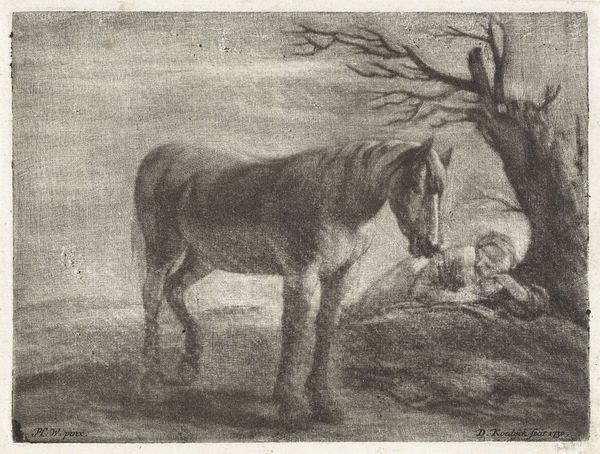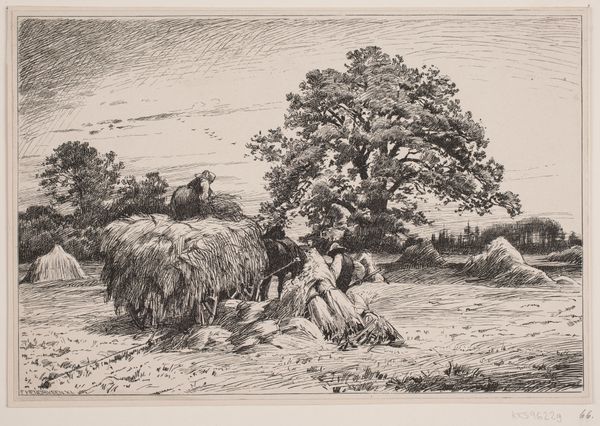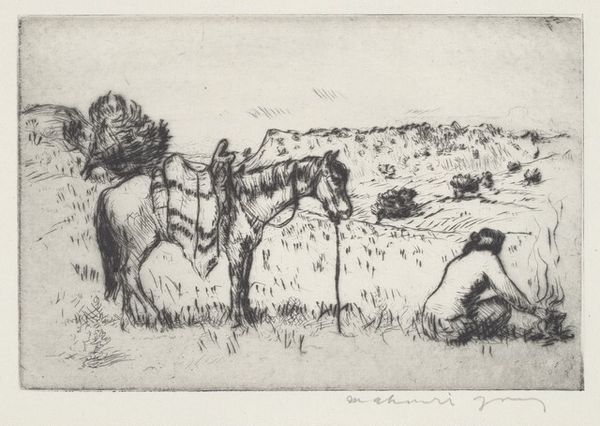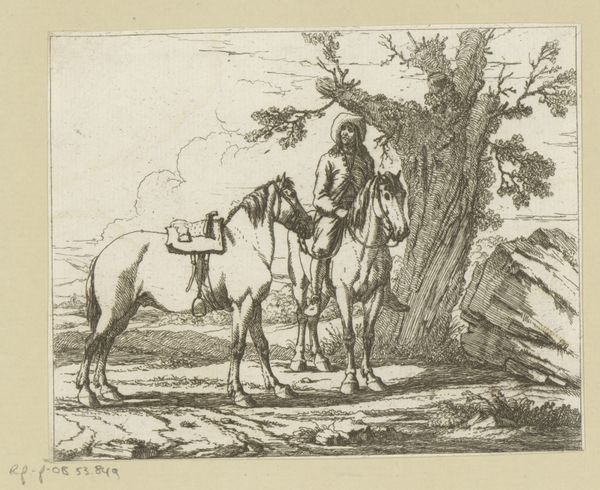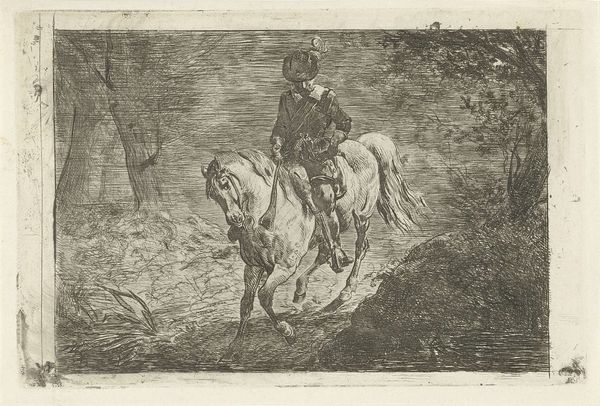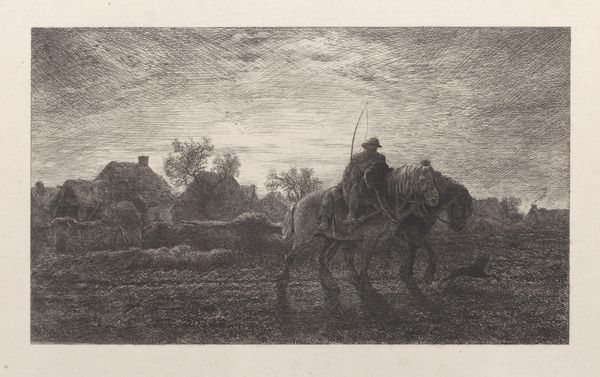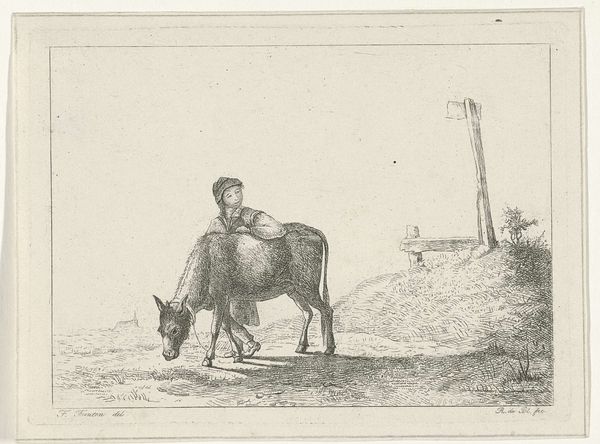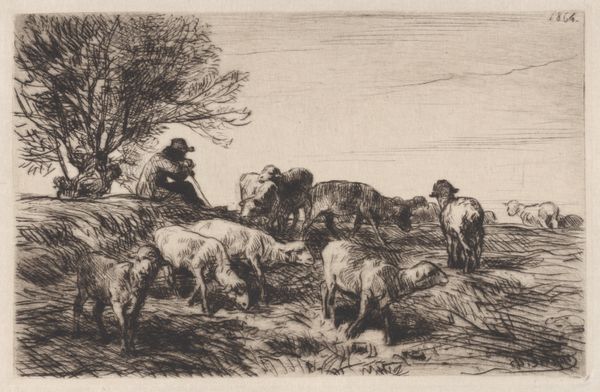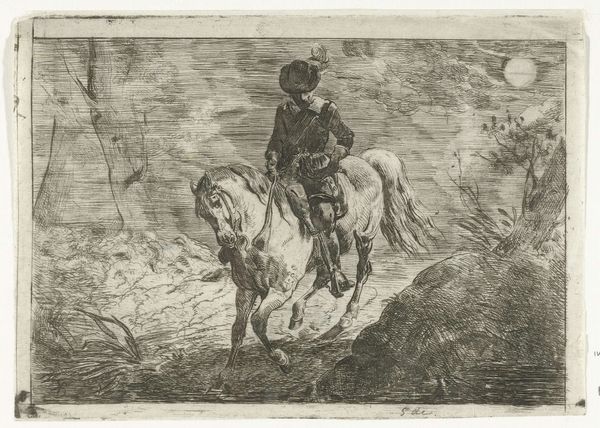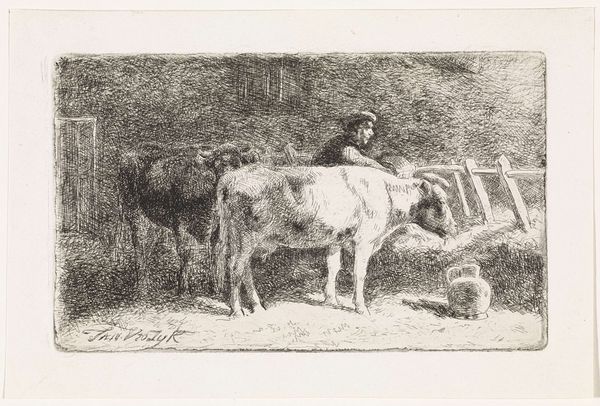
print, etching, paper
#
portrait
#
pencil drawn
# print
#
etching
#
landscape
#
figuration
#
paper
Dimensions: plate: 14.92 × 22.54 cm (5 7/8 × 8 7/8 in.) sheet: 20.48 × 27.94 cm (8 1/16 × 11 in.)
Copyright: National Gallery of Art: CC0 1.0
Editor: So, here we have Mahonri Young’s etching, "Navajo Lookout," likely made between 1917 and 1919. I’m struck by the almost harsh, sketched lines of the etching, contrasting with the calm, contemplative mood of the figure. How would you approach understanding this work? Curator: Considering a materialist perspective, the etching medium itself is key. The process of etching – the labor involved in scratching into the metal plate, the acid bath, the physical act of printing – is crucial. What impact did these industrial reproduction processes have? Editor: That’s interesting. I hadn’t thought about it in terms of industrial processes. How does that relate to the subject matter of a Navajo lookout? Curator: Well, how was this image consumed? As a mass-produced artwork, its accessibility changed the reception and understanding of Indigenous culture for a wider audience, one that perhaps hadn’t encountered it firsthand. Who was buying and viewing these prints and what meaning were they creating from them? Editor: So it's less about romanticizing the Navajo and more about the industrialization of art and its impact on the representation of different cultures? Curator: Exactly. We might even think about the paper used, the inks – where were these materials sourced? How does the economic and social system that allowed for their production shape our reading of the artwork? It also makes me wonder how this imagery compared to contemporaneous depictions of Native Americans in other popular media, or even government propaganda. Editor: I see what you mean. Thinking about the materials and production opens up questions of access, consumption, and even the socio-economic forces at play. I'll never see an etching the same way again. Curator: Indeed, it’s a constant negotiation between artist, material, and audience that ultimately constructs meaning. And who ultimately has access to it through consumption.
Comments
No comments
Be the first to comment and join the conversation on the ultimate creative platform.
